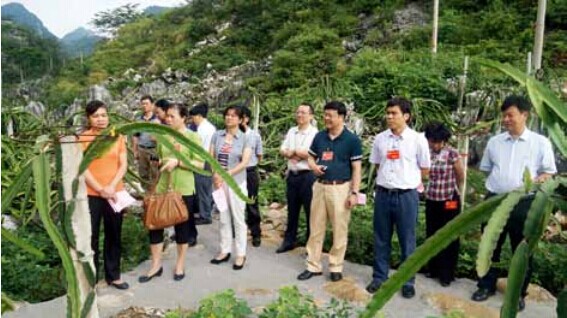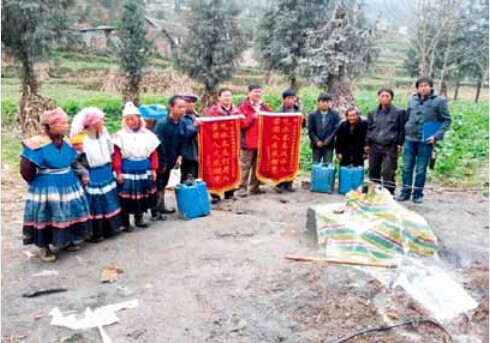Research Institutes
Major Research Achievements
Major Research Achievements Of 2013
(1) Research on regulation and storage technique of water and land in karst peak cluster depressions: This is a research project funded by the scientific support program of the MST. The research team has developed techniques and models for water-land conservation and surface karst water regulation and storage. They integrated the technique for the treatment of rocky desertification and recovery of ecosystem and improved the construction of the Guohua demonstration area in Pingguo County, so that the pitaya ecological industry was extended to more areas in Guangxi. This project received the second prize of the Award for Science and Technology Progress of the Guangxi Zhuang Autonomous Region in 2013.
(2) Research of filling process and mechanism in karst caves near surface (a subject of Project 973): A paleokarst cave filling model of the Tahe Oil Field was built to present evidence for disclosing filling and formation mechanisms of karst cavities. The research gave preliminary explanation for

Representatives from the Guangxi People’s Political Consultative Conference visiting the Guohua demonstration area
collapse mechanisms and control factors of the paleokarst caves in the Tahe Oil Field and promoted our understanding on the influence mechanism for the formation of cave elements in the Tahe Oil Field.
(3) Hydrogeological and environmental geological investigation of the Wumeng Mountain area: The research group analyzed the conditions of karst development and water abundance of water-filled systems in the context of geological setting and groundwater distribution pattern of the study area. The total footage of drilling holes for exploration and exploitation was up to 5072 m and 20 wells were completed with the total water yield of 12787 m3 /s, enough for serving 56500 people and 15721 draught animals and for irrigation of 910 acres of farmland.

Villagers of an ethnic minority village in Hezhang County, Guizhou Province presenting a silk banner for appreciation of efforts of water exploration
(4) Investigation of karst carbon sinks in typical river valleys of China: During the investigation, the research group regularly collected samples from the trunk stream and tributaries of the Yangtze River and conducted analyses for waters and carbonic anhydrase activity of soils to find out the distribution of carbonic anhydrase activity and its relationship with carbon sinks. The investigation shows that the solutes in the Yangtze River and tributaries come mainly from weathering of carbonate rock and clastic rock. The CO2 consumption of weathering is about 22.22 t CO2/(km2 =a), and the carbon sink flux of the Wujiang River is 36 t CO2/(km2 =a), which is the highest; whereas that of the Gangjiang and Tuojiang rivers is 16 t (CO2/km2 =a), which is the lowest.
(5) Supplementary hydrogeological investigation and research of the SICOMINES Copper and Cobalt Mine of Congo (Kinshasa): This is a public service project. In this research, a mathematic model for predicting inflow of water in the mine was established. The research revealed the law, planar distribution and vertical zonation of karst development; summarized types of R2 karst aquifers and considered that the major permeable beds of the mine are intensively-developed karst areas (CMN2 and RSC) and the structural belts affected by rupture zones. The northeastern and southern boundaries of the mine were basically outlined and their features were documented.

